|
|
|
4/20/07: Dig my funky callery gallery, Mallory
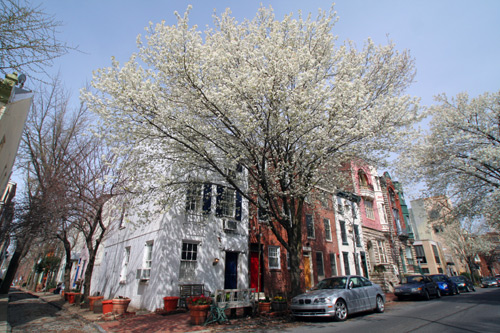
Spring is such a lovely time of year, don't you think? The trees and the grass start lookin' fresh and the sun and sky be lookin' their best. Birds be singin',
flowers be bloomin', a lot of brand new cars be zoomin'. Fly girls lookin' the best they can be, and the guys be dookie dookie Dan, you see.
Besides all that, I like the warm weather that has at long last decided to find us after what feels like months of purgatorial post-winter blah.
Punxsutawney Phil was way off this time 'round. Never mind all that, spring really is here now and that means trees are a-blooming. Cherry blossom trees
deservedly garner so much annual attention that they have festivals in their honor. But what about that other beauty bloomer with the white flowers . . . the one
that creates a canopy over the Fitler Square street above, and lines a number of blocks in West Philly's Spruce Hill, and dots the suburbs?
This, my friends, is the bradford pear tree.
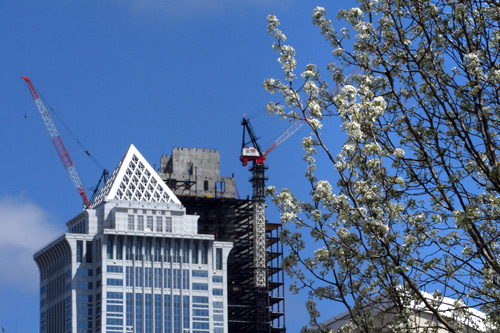
The bradford is just one of a number of cultivars under the parent tree, the callery (pyrus calleryana), alongside other variants like aristocrat, capital,
cleveland select and others. Around here and in the northeast in general, it's almost always the bradford pear, and since it is the bradford which lines the South
Street block we look out our office windows to, that's the angle we'll take here.
Is it native? Is it valuable? Is it useful? Is it a good tree? Well . . .
As with anything, there are two sides to the bradford pear. The pros are easy: they look magnificent for two weeks in the spring and two weeks in the fall. Their
white blossoms are familiar to the residents of those places just mentioned, and their reds, oranges and even purples give maples a run for their money for fall
foliage fantasticness. They form an aesthetic bridge between a wall of homes and the street. But the cons?
Well, there are more cons than you'd expect. After 20 or so years, they become top heavy and weak, thanks to a weakened crotch. (Heh heh . . . Viagra.) Because
they're weak in their older age, they break easily and can cause property and/or bodily damage. The way they're planted in many city and suburban streets doesn't
help either. More on that in a minute. Also, they have invasive tendencies, though not to the extent of the Norway maple or kudzu.
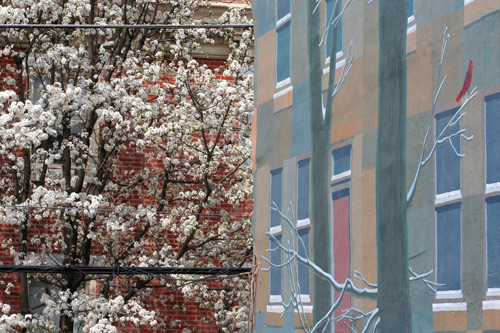
The bradford pear is in fact non-native and is a relative newcomer to this side of the world. Its origins are in the Nanjing area of China, from whence its
seedlings crossed the Pacific en route to America in the early 1900s. However, it wasn't introduced commercially until 1963, and they were an immediate hit with
gardeners and homeowners. Mike Hardy of the tree tender program at the Pennsylvania Horticultural Society says, "it was the tree of choice in the 60s . . . They
look nice and they grow fast. Everyone had them."
But, all it took was a few years and a nice hard ice storm to reveal their weak -- and destructive -- side. As a
result of the nor'easter earlier this week, the 4600 block alone of Walnut Street in West Philly suffered the damage of three downed bradford pears.
In addition to the bradford's heavy branching habits, their plantings are done incorrectly so frequently that it's just as big a contributor to their destruction
as the weather and electrical wires are. Jason Lubar of the Morris Arboretum's plant clinic reminds us that "trees are not just pretty; they work as machines. They
drain rainwater off of streets and sidewalks."
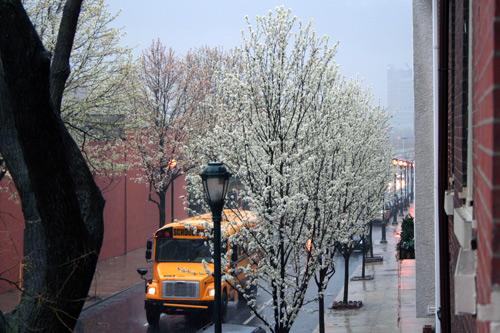
With that in mind, it's easy to see why the otherwise handsome brick landscaping of tree trunks (take a look anywhere in Center City -- like, say that picture
above -- for this) is detrimental to
the development of an already delicate tree. When bricks are piled two-high in a square with soil and flowers within, the rain that falls goes to that soil and the
flowers, and the sidewalk's rain runoff is deflected by the bricks elsewhere on the sidewalk, all of which contributes to an atrophy of the bradford's thirsty
roots. A noticeably bad example of this is found near that pillar of landscaping excellence, South Philly's Home Depot, where the tree roots are not only buried
under what the Hardy describes as a "mulch volcano", but they're also raised a good six inches off of the street in a traffic island.
"There's been a long standing debate over whether the bradford pear is appropriate to trade," says Todd Greenberg, the head gardener at Bartram's Garden, where
there are no callery pear trees, bradford or otherwise. That has more to do with history than quality, though. Fairmount Park took over the Garden from the Bartram
family in the 1850s and assumed maintenance responsibility -- including the planting of an array of species the Bartrams may or may not have approved of -- until
the John Bartram Association formed in 1893 and assisted the Park. That was of course long before the bradford pear, and for historic accuracy (not to mention
ecologic integrity), the JBA frowns upon the planting of non-native plants.
Greenberg offers that "flowering pears are nice, but there are other ornamental trees that are better in the long term than the short bursts of beauty [from the
bradford]." The amelanchier, or serviceberry, is a fine alternative and grows here naturally. You'll find a block of serviceberry trees on 48th Street between
Baltimore and Cedar Avenues. In addition to its similar white blossoms, the serviceberry bears an edible fruit in mid-fall that looks and tastes like a
blueberry.
So for all the trouble the bradfords are worth, is removing them advised? "I'm definitely not an advocate of planting it," Greenberg says, "but I
am an advocate of replacing bradfords with better cultivars, or preferably something native. We shouldn't go cutting down bradford pears willy nilly, but
it's ideal to phase them out for something that does not have the potential for damage."
Lubar agrees, suggesting that "they are a decent tree, but they have a limited use as a street tree."
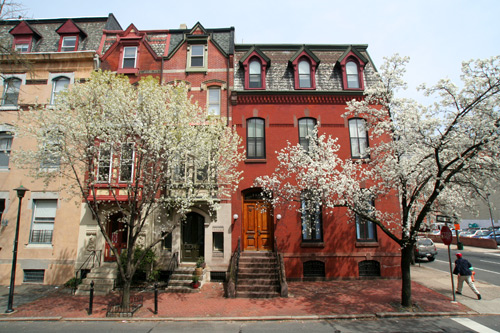
Bartram's Garden, the Pennsylvania Horticultural Society and the Morris Arboretum all basically agree that, while they're a beautiful tree for a couple weeks a
year, they are probably more trouble than they're worth.
Is this academic purity reflected in the retail realm? Albrecht's Nursery in Narberth indicates that the bradford is one of its best sellers, and was actually out
of stock as of yesterday. A representative there says that "they're great for along the street -- a 'good street tree' -- and they stand up well to pollution."
Laurel Hill Gardens in Chestnut Hill attests, suggesting it's one of their more popular trees, and that they'd even recommend it for folks looking for a
flowering street tree.
Two sides to every story, indeed. Whether you align your own views with the views of those who tend trees or those who sell trees is your call. What is
clear is that the bradford pear should be handled with care and caution. Plant wisely.
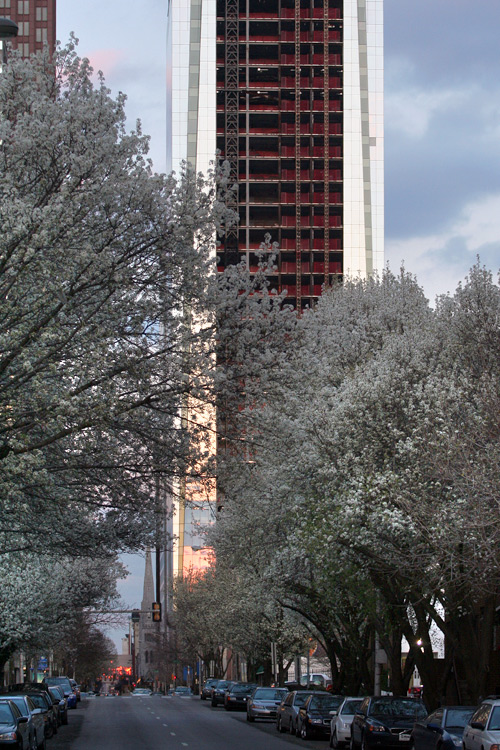
Some helpful links:
[Callery Pear wiki.]
[Master Gardner's Pros & Cons of Bradford Pears.]
[Bartram's Garden.]
[PA Horticultural Society.]
[Morris Arboretum.]
* * *
Trees, trees, trees. Seems like a good day to twist up some trees, doesn't it? HOLLER.
One love to the memory of my man Bob Marley.
–Could You B Love
|
|
|